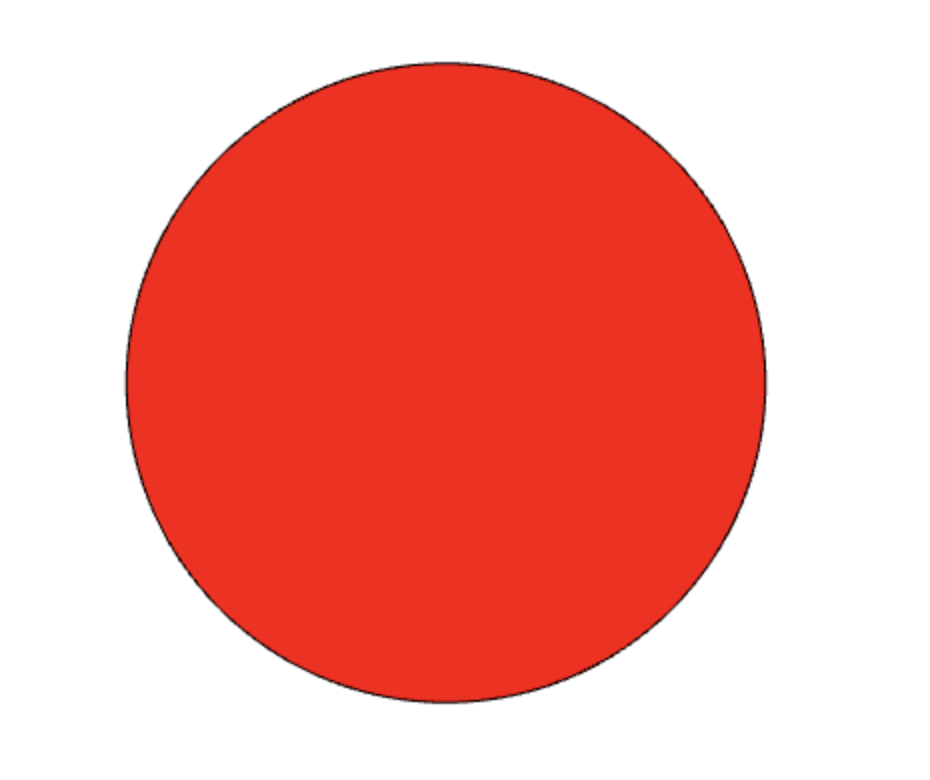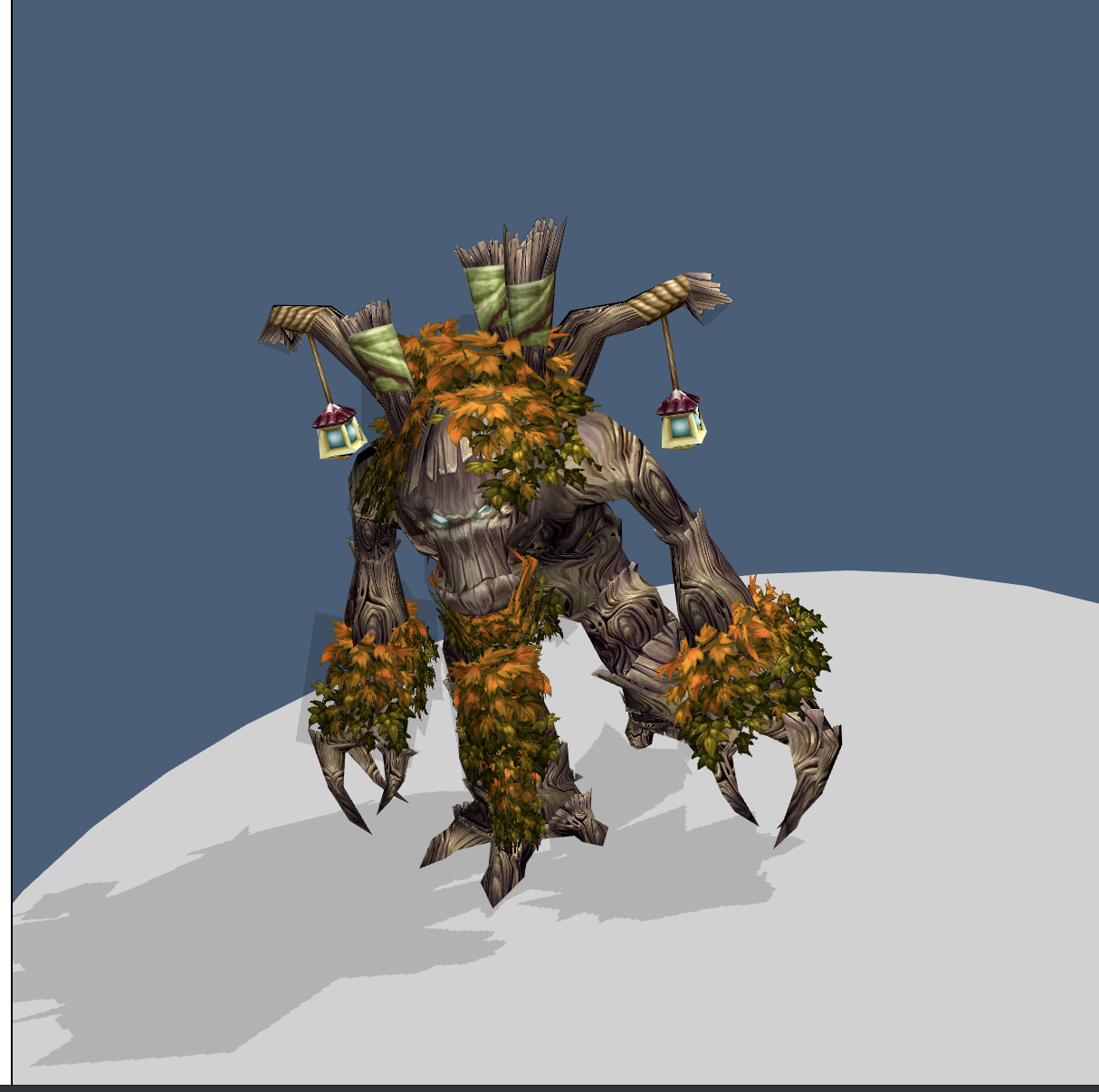
http://localhost:8000/wow/index.xhtml
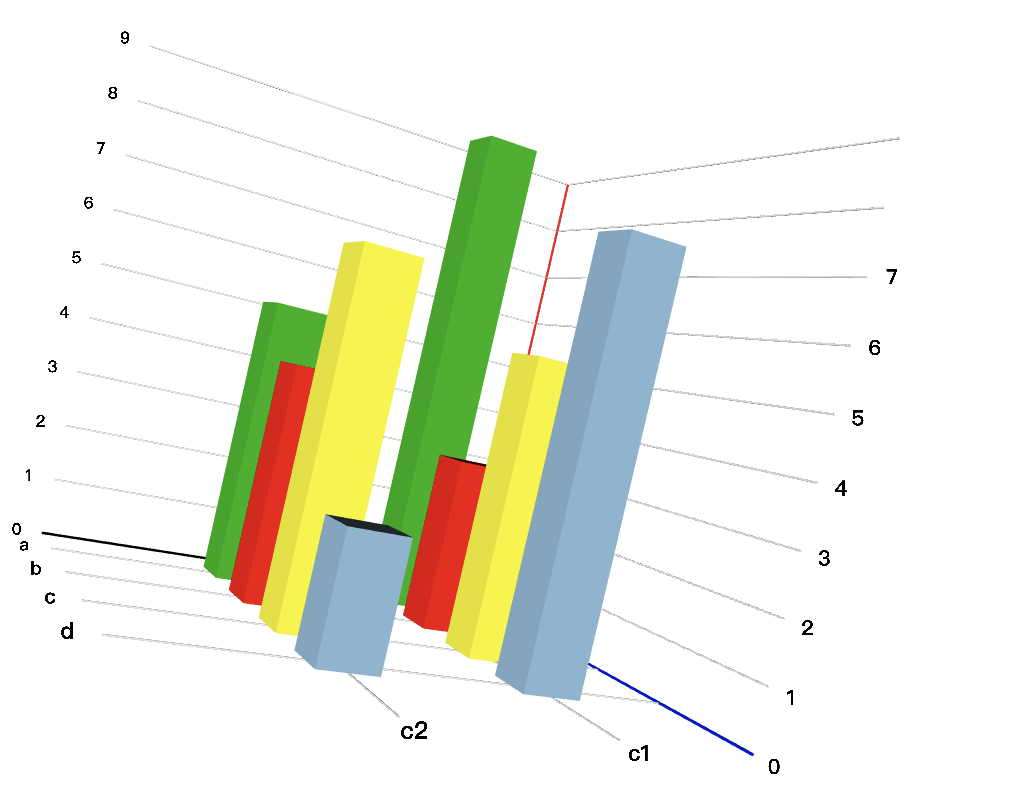
http://localhost:8000/x3d-chart/
首先我们尝试绘制这样一个圆:
传统的web 3d的基本方案:webgl
<html style="height: 100%; width: 100%"> <body style="height: 100%; width: 100%; margin: 0px"> <canvas id="my-canvas" style="height: 100%; width: 100%; display: block"></canvas> <script> const canvas = document.getElementById("my-canvas"); const context = canvas.getContext("webgl"); const redColor = new Float32Array([1.0, 0.0, 0.0, 1.0]); const blackColor = new Float32Array([0.0, 0.0, 0.0, 1.0]); // Use an orthogonal projection matrix as we're rendering in 2D. const projectionMatrix = new Float32Array([ 1.0, 0.0, 0.0, 0.0, 0.0, 1.0, 0.0, 0.0, 0.0, 0.0, 0.0, 0.0, 0.0, 0.0, 0.0, 1.0, ]); // Define positions of the vertices of the circle (in clip space). const radius = 0.5; const segmentCount = 360; const positions = [0.0, 0.0]; for (let i = 0; i < segmentCount + 1; i++) { positions.push(radius * Math.sin(2 * Math.PI * i / segmentCount)); positions.push(radius * Math.cos(2 * Math.PI * i / segmentCount)); } const positionBuffer = context.createBuffer(); context.bindBuffer(context.ARRAY_BUFFER, positionBuffer); context.bufferData(context.ARRAY_BUFFER, new Float32Array(positions), context.STATIC_DRAW); // Create shaders and program. const vertexShader = context.createShader(context.VERTEX_SHADER); context.shaderSource(vertexShader, ` attribute vec4 position; uniform mat4 projection; void main() { gl_Position = projection * position; } `); context.compileShader(vertexShader); const fragmentShader = context.createShader(context.FRAGMENT_SHADER); context.shaderSource(fragmentShader, ` uniform lowp vec4 color; void main() { gl_FragColor = color; } `); context.compileShader(fragmentShader); const program = context.createProgram(); context.attachShader(program, vertexShader); context.attachShader(program, fragmentShader); context.linkProgram(program); const positionAttribute = context.getAttribLocation(program, 'position'); const colorUniform = context.getUniformLocation(program, 'color'); const projectionUniform = context.getUniformLocation(program, 'projection'); function render() { // Size the drawing surface to match the actual element (no stretch). canvas.height = canvas.clientHeight; canvas.width = canvas.clientWidth; context.viewport(0, 0, canvas.width, canvas.height); context.useProgram(program); // Scale projection to maintain 1:1 ratio between height and width on canvas. projectionMatrix[0] = canvas.width > canvas.height ? canvas.height / canvas.width : 1.0; projectionMatrix[5] = canvas.height > canvas.width ? canvas.width / canvas.height : 1.0; context.uniformMatrix4fv(projectionUniform, false, projectionMatrix); const vertexSize = 2; const vertexCount = positions.length / vertexSize; context.bindBuffer(context.ARRAY_BUFFER, positionBuffer); context.vertexAttribPointer(positionAttribute, vertexSize, context.FLOAT, false, 0, 0); context.enableVertexAttribArray(positionAttribute); context.uniform4fv(colorUniform, redColor); context.drawArrays(context.TRIANGLE_FAN, 0, vertexCount); context.uniform4fv(colorUniform, blackColor); context.drawArrays(context.LINE_STRIP, 1, vertexCount - 1); } render(); addEventListener("resize", render); </script> </body> </html>
http://localhost:8000/indexwebgl.html
使用大杀器——x3d
<html style="height: 100%; width: 100%"> <head> <script type="text/javascript" src="http://www.x3dom.org/release/x3dom-full.js"></script> <link rel="stylesheet" type="text/css" href="http://www.x3dom.org/release/x3dom.css"> <style>x3d > canvas { display: block; }</style> </head> <body style="height: 100%; width: 100%; margin: 0px"> <x3d style="height: 100%; width: 100%"> <scene> <orthoviewpoint></orthoviewpoint> <shape> <appearance> <material diffuseColor="1 0 0"></material> </appearance> <disk2d outerRadius="0.5"></disk2d> </shape> <shape> <appearance> <material emissiveColor="0 0 0"></material> </appearance> <circle2d radius="0.5"></circle2d> </shape> </scene> </x3d> </body> </html>
http://localhost:8000/webgl-easy.html
什么是x3d
X3D 是表示 3D 模型的 ISO 标准,是虚拟现实建模语言(VRML)的后续标准。是VRML的超集,它可以表示为各种编码,包括 JSON 和 XML。后者特别适合嵌入到 HTML 文档中。它由 Web3D 联盟维护,他们希望它能像 SVG 一样在 HTML5 中得到原生支持。
为啥要关注它:
- 很多资源免费,并且多个工具都支持导出此格式,例如blendar就可以导出.x3d格式的文件
- 是目前唯一一个通过网络进行展示和交付3D模型的国际标准。
- 可以集成到多环境
In Web
X3DOM 是一个在web上的3D图形的运行时开源框架,可以支持x3d标准,并努力发展成为HTML5标准。
关于x3dom的定位:
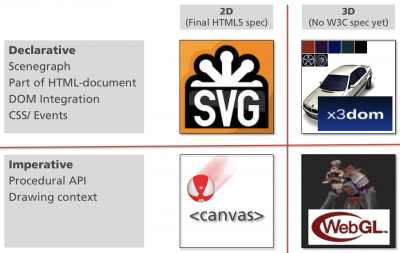
目前x3dom 与 x3d
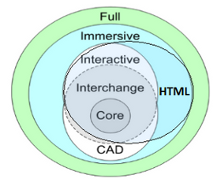
先看一个简单的例子:实现一个运动的3D小球
http://localhost:8000/animateBall.html
<html> <head> <meta http-equiv="X-UA-Compatible" content="IE=edge"/> <title>X3Dom Example OnOutputChange Event</title> <script type='text/javascript' src='https://x3dom.org/release/x3dom.js'> </script> <link rel='stylesheet' type='text/css' href='https://www.x3dom.org/download/x3dom.css'/> <script> /** * Uses the values of a PositionInterpolator to move another ball, * but instead of just routing the values, round the y component. * Thus the second ball moves like he is snapping to an invisible raster */ function snapBall(eventObject) { //Check if type and output of the eventObject are correct //There may be multiple eventObjects but only one of them contains the value we need if(eventObject.type != "outputchange" || eventObject.fieldName != "value_changed") return; //Get the value... var value = eventObject.value; //...and create a copy with the manipulated coordinates var newPos = new x3dom.fields.SFVec3f(2, Math.round(value.y), 0); //Set the newly created array as new position for the second ball document.getElementById("ball2").setAttribute('translation', newPos.toString()); //Show debug information (of course the data can be used to control non x3dom-objects, too) document.getElementById("posInterp").innerHTML = Math.round(value.y*100)/100; document.getElementById("posSnaped").innerHTML = newPos.y; } </script> </head> <body> <h1>Animate Objects with X3DOM!</h1> <x3d width='500px' height='400px'> <scene> <transform DEF="ball" translation='-2 0 0'> <shape> <appearance> <material diffuseColor='1 0 0'></material> </appearance> <sphere></sphere> </shape> </transform> <transform DEF="ball2" translation='2 0 0' id="ball2"> <shape> <appearance> <material diffuseColor='0 0 1'></material> </appearance> <sphere></sphere> </shape> </transform> <timeSensor DEF="time" cycleInterval="4" loop="true"></timeSensor> <PositionInterpolator DEF="move" key="0 0.5 1" keyValue="-2 -2.5 0 -2 2.5 0 -2 -2.5 0" onoutputchange="snapBall(event)"></PositionInterpolator> <Route fromNode="time" fromField ="fraction_changed" toNode="move" toField="set_fraction"></Route> <Route fromNode="move" fromField ="value_changed" toNode="ball" toField="translation"></Route> </scene> </x3d> </body> </html>
复杂一点的🌰
http://localhost:8000/hello-world.html
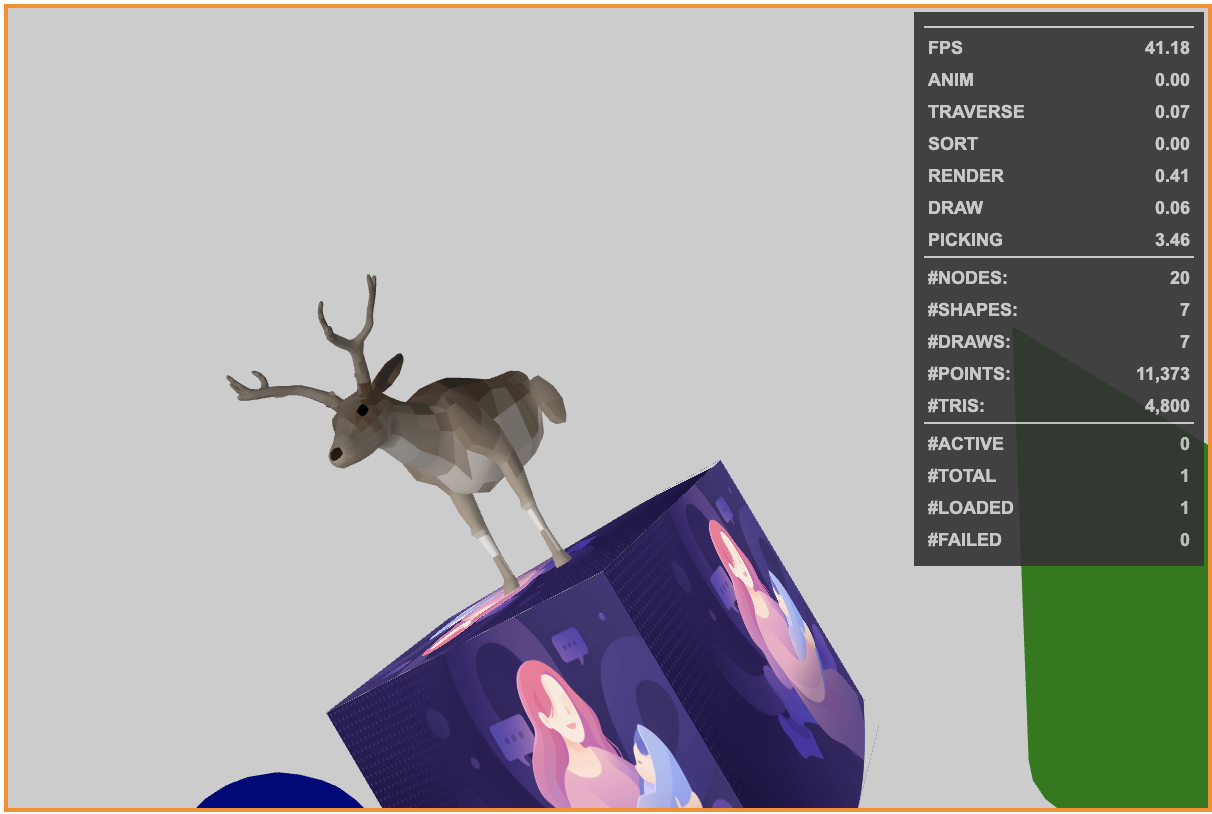
<html> <head> <title>My first X3DOM page</title> <script type='text/javascript' src='http://www.x3dom.org/download/x3dom.js'> </script> <link rel='stylesheet' type='text/css' href='http://www.x3dom.org/download/x3dom.css'> </link> <style> x3d { border: 2px solid darkorange; } </style> <script> function redNose() { if(document.getElementById('Deer__MA_Nose').getAttribute('diffuseColor')!= '1 0 0') document.getElementById('Deer__MA_Nose').setAttribute('diffuseColor', '1 0 0'); else document.getElementById('Deer__MA_Nose').setAttribute('diffuseColor', '0 0 0'); } </script> </head> <body> <x3d width='600px' height='400px' showStat="true"> <scene> <shape> <appearance> <ImageTexture url="https://img1.dxycdn.com/2019/0916/756/3368546464514541728-2.png"> <ImageTexture /> </appearance> <box></box> </shape> <transform translation='-3 0 0'> <shape> <appearance> <material diffuseColor='0 1 0'></material> </appearance> <cone></cone> </shape> </transform> <transform translation='3 0 0'> <shape> <appearance> <material diffuseColor='0 0 1'></material> </appearance> <sphere></sphere> </shape> </transform> <transform translation='0 1 0'> <inline nameSpaceName="Deer" mapDEFToID="true" onclick='redNose();' url="./Deer.x3d"></inline> </transform> </scene> </x3d> </body> </html>
那么首屏那个wow模型是怎么做出来的呢?
- 利用blender导出模型
- 引入模型
- 增加动画
http://localhost:8000/demo-blendar/
上代码:http://localhost:8000/wow/index.xhtml
剩下的精彩,等你自己再深入
3D图表
https://github.com/jamesleesaunders/d3-x3d
一个借助d3和x3d标准实现的3D图库
支持X_ite、x3dom等
<html> <head> <script src="https://d3js.org/d3.v5.min.js"></script> <script src="http://x3dom.org/release/x3dom.js"></script> <link rel="stylesheet" href="http://x3dom.org/release/x3dom.css" /> <script src="d3-x3d.js"></script> </head> <body> <div id="chartholder"></div> <script> // Select chartholder var chartHolder = d3.select("#chartholder"); // Generate some data var myData = [ { key: "c1", values: [ { key: "a", value: 9 }, { key: "b", value: 3 }, { key: "c", value: 5 }, { key: "d", value: 7 } ] }, { key: "c2", values: [ { key: "a", value: 5 }, { key: "b", value: 4 }, { key: "c", value: 6 }, { key: "d", value: 2 } ] } ]; // Declare the chart component var myChart = d3.x3d.chart.barChartMultiSeries(); // Attach chart and data to the chartholder chartHolder .datum(myData) .call(myChart);</script> </body> </html>
http://localhost:8000/x3d-chart/
